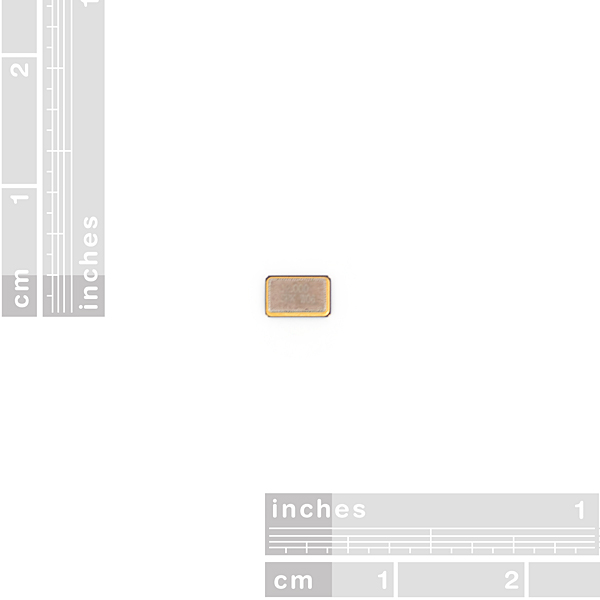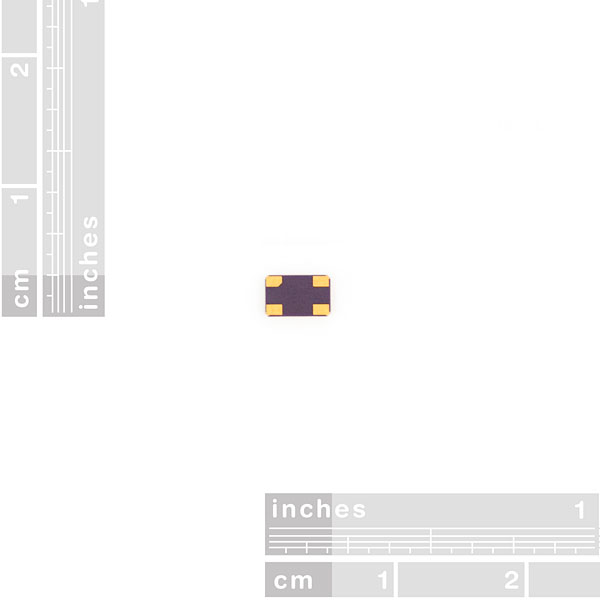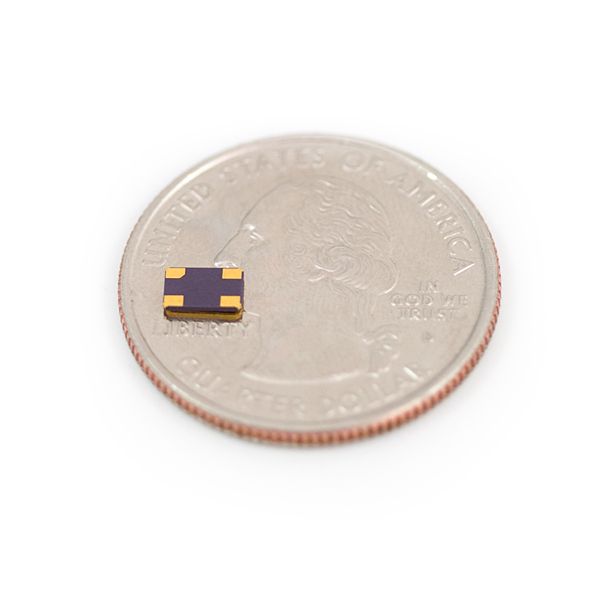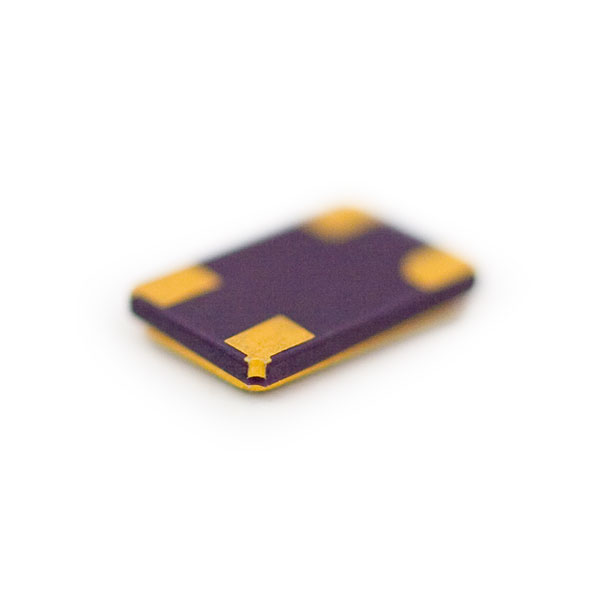These are very small surface mount quartz crystals used where size is a concern. Ideal for use with the nRF2401 ICs.
2****0ppm * 18pF load capacitance
- Small 5x3.2mm footprint
- Operating temperature: -20°C ~ +70°C
- Frequency Tolerance: +/-
Crystal SMD 16MHz Product Help and Resources
Core Skill: Soldering
This skill defines how difficult the soldering is on a particular product. It might be a couple simple solder joints, or require special reflow tools.
Skill Level: Competent - You will encounter surface mount components and basic SMD soldering techniques are required.
See all skill levels
Core Skill: Electrical Prototyping
If it requires power, you need to know how much, what all the pins do, and how to hook it up. You may need to reference datasheets, schematics, and know the ins and outs of electronics.
Skill Level: Competent - You will be required to reference a datasheet or schematic to know how to use a component. Your knowledge of a datasheet will only require basic features like power requirements, pinouts, or communications type. Also, you may need a power supply that?s greater than 12V or more than 1A worth of current.
See all skill levels
Comments
Looking for answers to technical questions?
We welcome your comments and suggestions below. However, if you are looking for solutions to technical questions please see our Technical Assistance page.
Customer Reviews
No reviews yet.





I'm still looking for an 8Mhz version of this crystal for a 3.3v Arduino Pro Micro circuit ( Atmega32U4 ) I want to build into my project. Any help? For now I need to know if the SMD footprint would be the same as this one, but I'll obviously need to source the component eventually too.
Is there an equivalent sized 8MHz one ?
Interesting how multiple people have asked if external caps were required and no answer as of yet... Yes, external caps are required. The size is based on pin cap of the microchip being used. Example: CL of this crystal is 18pF and the parasitic+input capacitance of Atmega328 is 10pf per pin
18pF(CL) = (C + 10pF(pin cap))/2
C = 26pF
So in short, you will need 2 - 26pf external capacitors.
DATASHEET HAS COMIC SANS!!!!
I hope you aren't doubting the integrity of product specifications. Item 2.2 of the Environmental & Mechanical specifications clearly states, Ahem. "2.2 Shock: drop freely from 75cm height 3 times on 30mm thick hard wooden board." You just can't argue with science.
The last 2 times I've ordered this, it has not been the 5x3.2mm footrint crytstal, but rather a 6x3.5mm crystal. They are not interchangeable, so watch out! Hopefully this will be corrected soon.
Same here. I was expecting the same one that's in the Crystal Kit.
In case anyone is interested I have made a sketchup 3D model of this component
http://sketchup.google.com/3dwarehouse/details?mid=fc349dd71d7ad1f86eed87081bea555c
We'd love to add that to our GitHub repo here if you don't mind.
Does this crystal need external caps or I just need to connect ground pins to ground at PCB layout?
After fabricating 200pcs of PCBs I have learnt that it needs. :( 22pF works perfect.
FYI, if anyone is interested in getting this in bulk, Mouser carries it: ABM3B-16.000MHZ-B2-T
I know this has been asked before, but do the two ground/case pins need to be connected to ground? Also, why is the 16Mhz crystal $1.50 while all the others are only $0.95? Thanks.
In crystals smaller = more expensive.
But the 24Mhz and 12Mhz SMD crystals are $0.95 while this is $1.50. I don't think TheInventor was talking about the normal crystals vs the SMD ones. I can only guess that the price difference is due to the order size SFE buys these in, or that the distributor sells them in.
Edit: The datasheets indicate these are sold 20k per box, while the other two are sold 10k per box. SFE may not buy in those quantities though.
Do you prefer these to: CSTCE series? Any advantages with this one except for being larger? which took me a little while to get used to hand solder on your eagle pads... They don't quite line up lol
Help! Does anyone know of a Fritzing part for this? I'm designing a 2.4ghz wireless board, and need to use this instead of its through hole counterpart. The "SMD Crystal" that come with Fritzing looks nothing like this.
I have one of these that seems to have died in a project after a few weeks of operation. I don't know if it died because of poor soldering (or overheating) or if it died because the SF Eagle library didn't have the other two pins connected to ground. I, too, would like to know if the pins need to be grounded or if they may be left floating.
I don't see this in the eagle library (and I just downloaded the new one today). If it is in there, what's the name.
Could this be used on a arduino copy board? I ordered some and now i see there are four pins...
yes i think so
The Datasheet lists the load capacitance as being 18pF and you have it listed here as 12pF. For maximum stability in my project which is it?
heads up to anyone milling/etching their own board -- the datasheet for this part showing the pads is LOOKING FROM THE BOTTOM. When looking at this crystal from the top, the upper Right and lower Left pads are the crystal pads, while upper Left and lower Right are ground.
[GND]..............................[X1]
.
.....................top....................
.
[X2]..............................[GND]
Would it be wrong to leave both GND pads floating ? I am looking at: http://www.mouser.com/ds/2/417/7c-5562.pdf And they have: PAD:FUNCTION 1:ENABLE CONTROL 2:GND 3:OUT 4:VDD
Is pad function following some standard ?
the datasheet states ~14.74 MHz. Is this correct?
To SparkFun Eagle Library Maintainer (somebody must have that title, right?),
The two ground pins on the Eagle footprint for this part are not connected to ground. Is this intentional, or just an oversight? It seems like they should be . . .
*Brian
I have used this crystal before and have always connected the pins to ground. It is a pain to change the eagle part to having its ground pins connected. It would be nice if sparkfun fixed this.